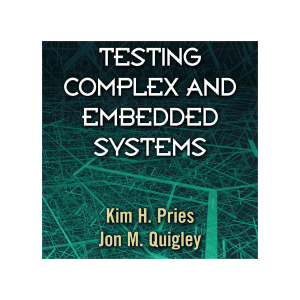Test and Verification Management
Test and verification management are the processes and procedures to suitable critique the product (hardware or software) or processes (production). This is risk identification and mitigation activity as it attempts to quantify quality attributes of the product that may cause concerns with the customer during application. Testing and verification is also part of project management in that the results are often used to confirm contractual obligations are met, and thereby are part of project closure. Testing and verification management contain, planning and control, analysis and design, execution, reporting and closing activities. Hardware testing may include environmental stimuli (multiple simultaneous such as thermal and vibration) as well as testing the product to the extremes of functionality.

Testing Closure

In testing closure the objective and specific deliverable items from the testing are compared to the actual achievements and deliverables. The testing documentation is stored in a way that is easily retrievable along with the information on the product iteration the specific test cases were conducted. The test environment configurations are archived so these can also be retrieved at a later date should that be needed. Lessons learned are recorded from which the team will apply at some future date.
Test Execution

During test execution the tests are conducted on the product. Each of the test conditions and test environments are used to conduct the defined tests. Sometimes there will be spontaneous testing conducted, that is not one that was born out of the scope, plan or test analysis, but from what is learned in the process of conducting the test. Test execution will also be responsible for re-testing as perhaps the results of the test were some anomaly based upon the test configuration, or to learn more about the failure to be able to accurately report the details of the conditions that caused the failure. These are clues the developers will use to find the reason for the failure (hardware or software). Test execution address regression testing, that is testing of old parts of the product that have not changed, but require testing since the product has changes – this is largely associated with software.
Test Exit, Metrics and Reporting

Testing produces data from which an informed decision about the product can be made. These metrics will inform the team and other stakeholders the product’s suitability for release or production. Test metrics such as failure rates and severity remove some of the uncertainty from the launch. This phase of the testing produces reports where this information will reside allowing the project manager, stakeholders and executives to decide whether to launch or not based upon the results.
Test Planning and Control

To be able to test requires an understanding of the objectives of the project and customers. This understanding makes it possible to discern specific risks and clarify the scope of the testing to make assessment of those risks possible. Test planning will uncover and define the best test strategy along with discovering the talent and equipment required. Additionally, the planning will evoke key metrics or measurements from which the testing and results will be evaluated.
Test Analyze and Design

In test analysis and design, specific test conditions are identified from which the details of the testing will be created. This will require inputs such as product requirements and drawings, specifications, system descriptions and interfaces to other components and typical and extreme applications of the product. This will generate specific test methods, criterion, and metrics that will lead to detailed test cases along with the input data (test conditions) for the test. There is a strong connection between the product requirements and design documentation and the test details.
Testing Sites
Test and verification management – techniques for ensuring the product design, material and, where applicable, manufacturing processes culminate in meeting the customer’s needs. At the minimum verification serves to confirm or refute the product meets requirements. However, there are many other approaches to testing iterations of the product through the development process. This includes software testing, which consists of processes and techniques that is coupled with the development effort to ensure the product quality over prototype iterations and the full lifecycle of the product.
-
- PD&D There is a lot to product testing
- Design Reuse – Automated Testing and Simulation
- Test-Talk Testing Results and Predictions
- Test-Talk Qualitative Testing
- Test-Talk Testing and Evidence
- Test-Talk Testing, Product Growth and Configuration Management
- Embedded Magazine, Testing, Inspection and Evaluation
- Embedded Magazine, What you need to know about automated testing and simulation
- Elephant Scale – Big Data Testing
- What testers should know about domain knowledge
- What is Exploratory Testing?
- The Embedded Software Development Process
- Quigley’s Corner: Wire harness development and testing
- The challenges of testing increasingly complex systems
- The Embedded Software Development Process
- Test Engineer
- Quigley’s Corner: While you were Working.
The use of decision matrix tools can help us make a better decisions for our project and our organization and improve the outcome of our work.
2019 Carolina Collegiate Student Chapter
Building a Cause & Effect Diagram
CMMI Tracking
8D Template
Pugh Matrix
How to Brainstorm
TIEMP 02
Using Pareto Charts
SPaMCAST 477 – Silence: A Powerful Tool, Muddling Through, Monolithic Monolith
SPaMCAST 552 – Fit For Value, Saying No, Essays and Discussions
https://spamcast.libsyn.com/spamcast-552-fit-for-value-saying-no-essays-and-discussions
SPaMCAST 575 – Messing Up Agile Hybrids, Deming and Book Club, Essays and Discussions


